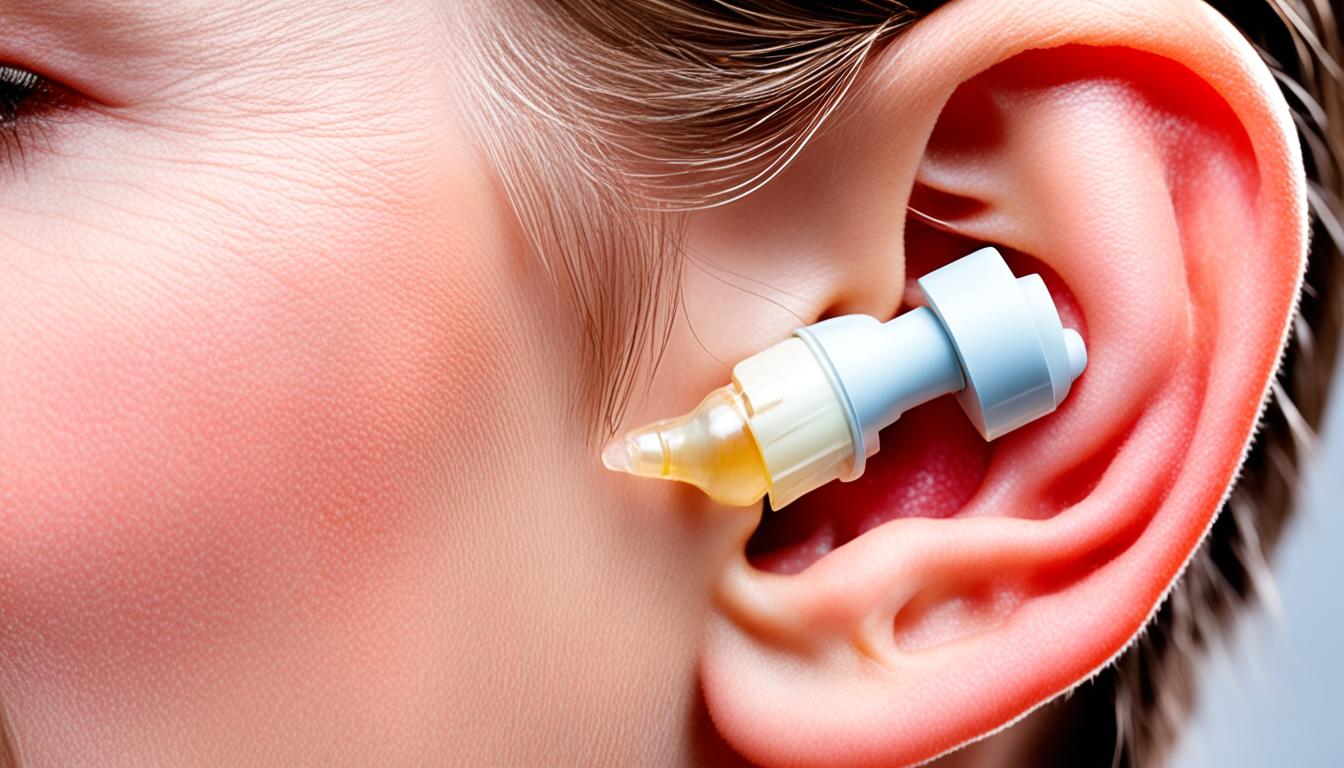Otitis externa, known as “swimmer’s ear,” infects the ear canal’s skin layer. It connects the eardrum to the outside ear. Bacteria or fungi cause this condition. Otitis externa usually happens after swimming. It can be acute or chronic.
While less dangerous than otitis media, untreated otitis externa may affect hearing. The primary cause is exposure to dirty pool or pond water. It introduces bacteria or fungi into the ear canal.
Other factors include scratching ears, foreign objects stuck in ears, and chronic skin diseases like eczema or psoriasis. Symptoms range from mild pain, tinnitus, and itchy ears to severe ear discharge, painful growths, or pimples in the ear cavity.
Otitis externa diagnosis involves an otoscopic examination of the ear canal and eardrum. It also tests for the specific bacteria or fungi causing infection. Treatment usually includes antibiotic ear drops for 10-14 days.
In severe cases, oral antibiotics, corticosteroids, or pain relievers may be used. Interestingly, stem cell therapy is a promising new otitis externa treatment. By using the body’s regenerative cells, it may reduce inflammation, promote healing, and prevent long-term complications.
While stem cell therapy for otitis externa is still in research, early studies show encouraging results. This approach could be valuable alongside traditional treatments.
Key Takeaways
- Otitis externa is an infection of the skin in the ear canal, often caused by exposure to dirty water.
- Symptoms can range from mild pain and itching to severe ear discharge and hearing loss.
- Diagnosis involves an otoscopic examination and testing for the specific bacteria or fungi causing the infection.
- Traditional treatment includes antibiotic ear drops, and in severe cases, oral medications or corticosteroids.
- Stem cell therapy is a promising new treatment option that may help reduce inflammation and promote healing.
Understanding Otitis externa
Definition and Overview
Otitis externa is an infection of the skin in the ear cavity. It is caused by bacteria or, rarely, fungi. It inflames the outer ear canal connecting the eardrum to outside.
Otitis externa, also called “swimmer’s ear,” is a common condition. It often affects children and swimmers. Though less dangerous than otitis media, untreated cases can impair hearing.
Prevalence and Risk Factors
Otitis externa is relatively common, especially in hot, humid, and polluted areas. Risk factors include dirty pool/pond water, scratching ears, unclean headphones, and skin conditions like eczema.
Otitis externa
Symptoms
Otitis externa symptoms vary. Mild symptoms include slight pain, itching, ringing, and clear discharge. Moderate symptoms are intense itching, severe pain, increased fluid drainage causing blockage, and hearing loss. Severe symptoms include excruciating ear pain radiating to face, neck, or head, complete blockage, redness or swelling of outer ear, swollen neck lymph nodes, and fever.
Infants and young children may not verbalize symptoms. They may react when ear is touched, refuse food, lose balance, or have red, scaly ear canal with visible pus.
Causes
The main cause is exposure to dirty water like pools or ponds, introducing bacteria or fungi into ear canal. Other causes are scratching ear or using cotton swabs or objects to clean ear, damaging delicate skin lining and allowing infections. Chronic skin conditions like eczema or psoriasis increase susceptibility. Even water from baths or showers entering ear canal can lead to condition.
Diagnosis
Healthcare providers inspect ear canal and eardrum using otoscope. They may test any discharge or pus for specific bacteria or fungi causing infection. Additional tests like audiogram for hearing may be ordered. Differentiating otitis externa from other ear infections like acute otitis media with otorrhea is important.
Treatment Options
Primary treatment involves antibiotic ear drops for 10-14 days. In severe cases, oral antibiotics, corticosteroids, or pain relievers may be used. Keeping ear dry during treatment is crucial. Warm compresses relieve pain. For chronic or complicated cases, long-term treatment or follow-ups prevent complications.
Stem Cell Therapy for Otitis externa
Stem cell therapy is promising for otitis externa. Using body’s regenerative cells, it may reduce inflammation, promote healing, and prevent long-term complications. While still in research stage, early studies show encouraging results, suggesting potential as valuable addition to traditional treatments.
Conclusion
Otitis externa is a common ear infection. It often causes discomfort. It can affect people of all ages, especially kids and swimmers. While not as severe as otitis media, ignoring this condition may lead to complications and affect hearing.
Understanding the causes, symptoms, and diagnosis process is vital. Seeking prompt treatment, typically antibiotic ear drops, is crucial. Interestingly, stem cell therapy is being explored as a promising alternative.
By staying informed and seeking medical help when needed, you can effectively address this condition. Timely intervention and innovative therapies help manage this common ear infection, protecting your overall ear health.
The otitis externa conclusion: with proper treatment, this often uncomfortable condition can be managed successfully. Proactively addressing causes, symptoms, and diagnosis considerations helps maintain overall ear health and well-being.
The otitis externa summary: though uncomfortable, this condition is treatable through traditional and novel approaches. By addressing causes, symptoms, and diagnosis, you can take necessary steps to tackle otitis externa and protect your ear health.

